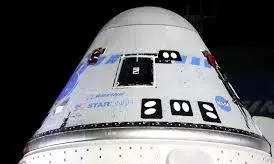
Boeing's Starliner enters exclusive club of crewed US spaceships
text_fieldsBoeing is set to join an esteemed group of spacecraft with the launch of its Starliner capsule, marking only the sixth vessel built in the United States for NASA astronauts.
Over the history of American space exploration, only a handful of spacecraft have had the honor of carrying human beings beyond Earth's atmosphere. Now, Boeing's Starliner is poised to join this prestigious group, representing a significant milestone in the nation's space program.
The journey of crewed American spaceships began with Project Mercury, launched in 1958 shortly after the formation of NASA. Alan Shepard's historic flight on May 5, 1961, marked the first American venture into space, closely following Yuri Gagarin's pioneering flight for the Soviet Union.
Following the success of Project Mercury, NASA embarked on Project Gemini, aimed at extending mission durations and developing crucial spaceflight maneuvers. Gemini introduced onboard computers and facilitated complex tasks like spacewalks and spacecraft docking.
The Apollo program emerged as a response to President Kennedy's challenge to land a man on the Moon. This monumental achievement required groundbreaking technology, including the colossal Saturn V rocket and the iconic command module.
While the Apollo program celebrated triumphs like the historic moon landing, it also faced tragedy with the loss of the Apollo 1 crew in a preflight fire.
NASA's Space Shuttle program revolutionized spaceflight with its reusable spacecraft and glider-like landings. Despite significant achievements, the program was marred by two catastrophic disasters - the Challenger and Columbia accidents.
With the retirement of the Space Shuttle, the United States turned to commercial partners for crewed spaceflight. SpaceX's Crew Dragon made history by ferrying astronauts to the International Space Station, while Boeing's Starliner faced technical challenges.
Both Crew Dragon and Starliner represent a new era in space exploration, with sleek designs, autonomous capabilities, and a focus on reusability. While SpaceX has achieved success, Boeing continues to work through its issues, highlighting the complexities of space travel.
Boeing's entry into the elite club of crewed US spaceships underscores the nation's commitment to space exploration and its ongoing quest to push the boundaries of human achievement beyond Earth's atmosphere.























